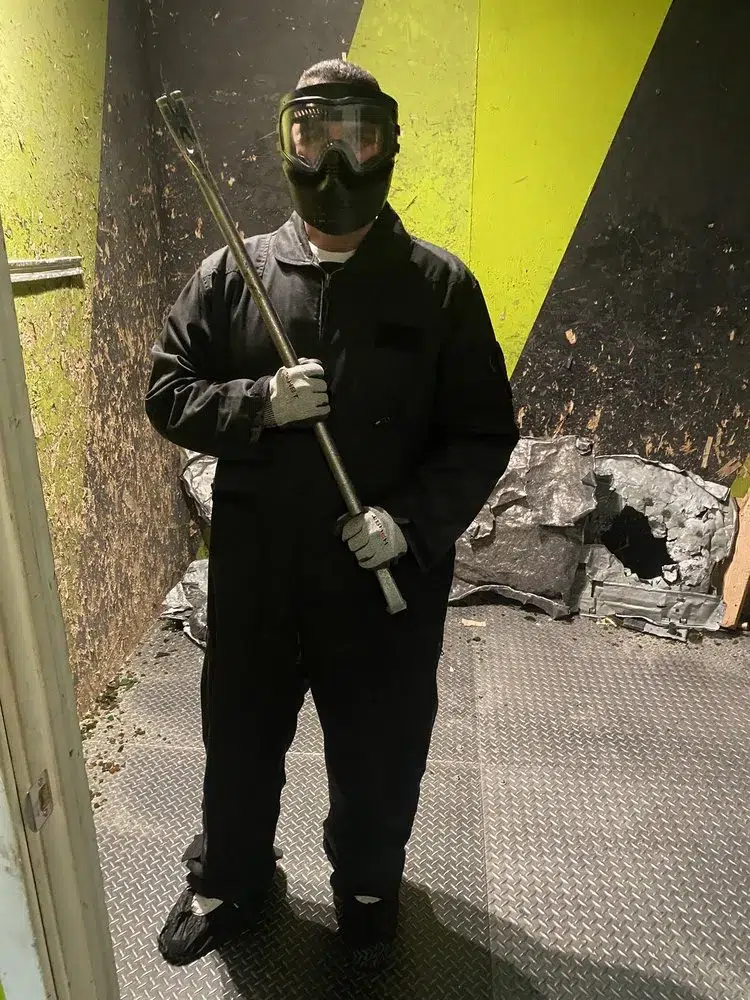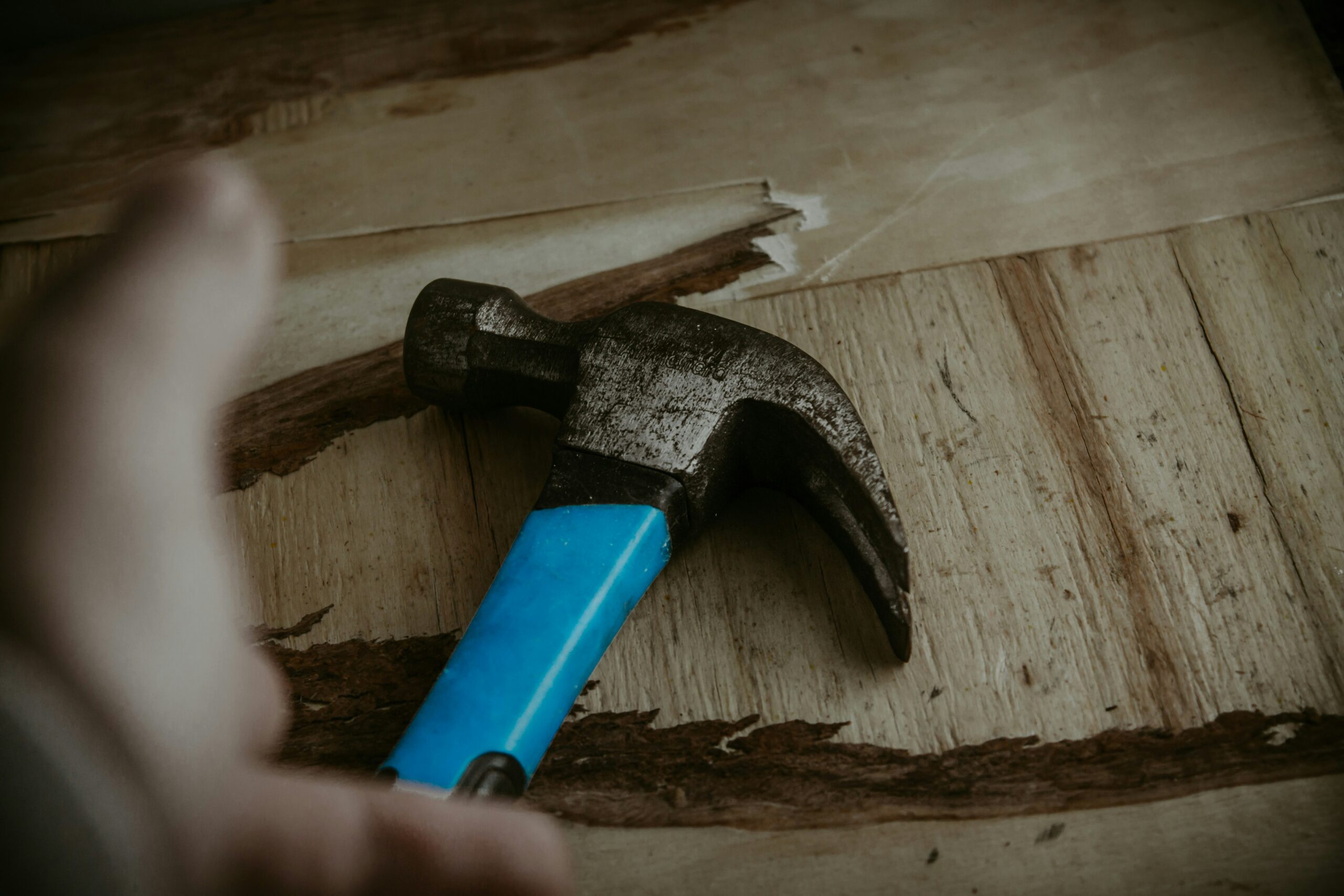Rage rooms provide a safe space for catharsis and stress relief. This guide covers safety protocols, the experience, and benefits of rage room sessions. Interested in trying a rage room? Learn about the experience, safety protocols, and potential benefits for stress management and emotional release.
Key Takeaways
- Rage rooms offer a unique outlet for stress relief through the controlled destruction of objects
- Safety is paramount, with protective gear and staff supervision ensuring participant well-being
- The experience combines physical activity with emotional release, providing mental health benefits
- Participants can customize their session by choosing tools and breakable items
- Post-session reflection and feedback help process emotions and improve future experiences
Introduction to Rage Rooms

Rage rooms offer a unique outlet for stress relief, allowing participants to smash objects with a hammer. This concept has grown in popularity, appealing to those seeking a novel way to release pressure and improve mood. Understanding the origins, benefits for brain health, and safety measures like wearing a helmet is essential before embarking on a rage room session.
Understanding the Concept of a Rage Room
A rage room provides a safe, controlled environment where individuals can release pent-up aggression by smashing objects with various tools. Participants typically don protective gear, including a face shield and gloves, before entering a room filled with breakable items such as glass bottles and electronic devices.
Armed with tools like axes, hammers, or baseball bats, they can unleash their frustrations on these objects, serving as a unique stress-relief medium.
Origins and Popularity Growth
Rage rooms originated in Japan in 2008 as a stress-relief facility, quickly gaining popularity worldwide. The concept spread to Serbia in 2013, where the first rage room outside Japan opened, featuring various breakable items like ceramic plates and old computers. As word spread, these facilities popped up across the globe, offering a unique outlet for stress relief.
The popularity growth of rage rooms can be attributed to their effectiveness in providing a controlled environment for releasing pent-up emotions while also offering a novel experience that appeals to thrill-seekers and those looking for unconventional ways to unwind. The evolution of rage rooms has led to diverse offerings, including:
- Themed rooms (e.g., office spaces, kitchens)
- Team-building events for corporate groups
- Specialized sessions for couples therapy
- Integration of virtual reality technology
- Eco-friendly options using recyclable materials
Who Should Consider a Rage Room Session
Rage room sessions can benefit individuals seeking stress management techniques or a unique experience to release pent-up emotions. People dealing with anxiety or day-to-day frustrations may find smashing items in a controlled environment therapeutic.
Couples may also consider rage rooms as an unconventional form of couples therapy, allowing them to work through conflicts in a safe, physical manner.
However, it’s important to note that while rage rooms can provide temporary relief, they should not replace professional mental health support for ongoing stress or anxiety issues.
Preparing for Your Rage Room Experience

Preparing for a rage room session involves several key steps. Participants should learn how to book a session, understand what to wear and bring, and review the rules and guidelines.
This preparation ensures a safe and enjoyable experience in the rage room space, allowing for proper emotional release. Health professionals recommend familiarizing oneself with these aspects before smashing large items.
How to Book a Session
Booking a rage room session is straightforward and can be done online or by phone. Most facilities offer various packages, allowing participants to choose the duration and items they wish to smash. Individuals should consider their clothing choices when booking, as comfortable attire suitable for physical exercise is recommended.
While rage rooms are not a substitute for psychotherapy or cognitive behavioral therapy, they can complement these treatments as a form of stress-relief behavior. Here’s a comparison of booking options:
What to Wear and Bring
Participants should wear comfortable, breathable clothing suitable for physical activity when attending a rage room session. Closed-toe shoes are essential for safety. While most facilities provide protective gear, including helmets and goggles, individuals may bring their own if preferred.
Some rage rooms allow participants to bring personal items to smash, but checking the facility’s policy beforehand is crucial. For stress relief, consider bringing a crowbar or other permitted tools. Essential items to bring include:
- Comfortable, closed-toe shoes
- Change of clothes (optional)
- Water bottle
- Towel
- Personal protective gear (if allowed)
Reviewing the Rules and Guidelines
Before participating in a rage room session, individuals should carefully review the facility’s rules and guidelines. These often include restrictions on personal protective equipment, limitations on what can be brought into the room, and guidelines for safe behavior during the session.
While rage rooms can serve as a unique form of anger management, they are not a substitute for professional treatment or meditation practices. Parents should note that most facilities have age restrictions and may require adult supervision for younger participants.
During the Rage Room Session

During a rage room session, participants experience a structured process from arrival to completion. This includes check-in procedures, selecting tools like sledgehammers or baseball bats, and choosing breakables.
The atmosphere inside the room is designed for the controlled release of rage. Proper time management ensures maximum benefit within the allotted session while adhering to safety gear requirements.
Arrival and Check-in Process
Upon arrival at a rage room facility, participants typically check in at the reception area. Staff members guide them through a brief orientation, explaining safety protocols and the controlled environment designed for stress relief.
Visitors then sign waivers acknowledging the potential risks associated with the activity. This process ensures that participants understand the therapeutic nature of the experience and are prepared to release their anger safely, whether they’re in New Jersey or elsewhere.
Selecting Your Tools and Breakables
Upon entering the rage room, participants select their tools and breakables for their time slot. The room typically offers a variety of items, from sturdy baseball bats to delicate wine bottles, allowing individuals to customize their experience.
Participants don their protective gear before choosing their weapons of destruction and the objects they wish to smash, often accompanied by energizing music to enhance the mood. The selection process is designed to cater to individual preferences and stress relief needs:
- Tools: Sledgehammers, baseball bats, crowbars
- Breakables: Wine bottles, old electronics, ceramic plates
- Protective gear: Helmets, gloves, safety goggles
- Music options: Upbeat, aggressive, or calming playlists
- Time slots: 15, 30, or 60-minute sessions
The Atmosphere Inside the Room
The atmosphere inside a rage room is designed to create a safe space for emotional release. Participants are surrounded by breakable items like furniture and bottles arranged to simulate various scenarios. The room is typically soundproofed to allow for uninhibited expression, with music playing to enhance the experience.
Safety measures are visible throughout, reminding participants of the controlled nature of the environment. The combination of these elements creates a unique atmosphere that encourages stress relief through physical activity:
- Soundproofed walls for privacy
- Strategically placed breakable items
- Background music to set the mood
- Visible safety reminders
- Adequate lighting for visibility
Managing Time Within Your Session
Effective time management is crucial during a rage room session to maximize the experience. Participants should pace themselves, focusing on one item at a time to fully enjoy the destruction process.
It’s advisable to start with smaller objects before moving on to larger ones, allowing for a gradual buildup of intensity. This approach helps individuals maintain energy throughout the session and ensures they can fully engage with each item, enhancing the overall stress-relief benefits.
After the Session

After a rage room session, participants experience a cooling-down period and reflect on their experience. They can share feedback and discuss their impressions with staff or fellow participants. Many find this debriefing valuable for processing emotions and considering future visits or group sessions.
Cooling Down and Reflecting
Participants enter a cooling-down phase after the intense physical activity of a rage room session. This period allows them to catch their breath, relax their muscles, and begin processing their experience.
Many facilities provide a designated area for reflection, where individuals can sit quietly, sip water, and contemplate the emotions they’ve released.
During this time, participants often report feeling calm and relief, as the physical exertion and emotional release contribute to a more balanced state of mind.
Sharing Feedback and Experiences
After a rage room session, participants often have the opportunity to share their feedback and experiences. Many facilities provide a brief survey or encourage informal discussions with staff members.
This sharing process allows individuals to reflect on their emotional journey and physical exertion during the session. It also helps rage room operators improve their services and tailor future experiences to meet participants’ needs. Common topics discussed include:
- Overall satisfaction with the experience
- Effectiveness in stress relief
- Favorite tools or breakable items
- Suggestions for improvement
- Interest in future sessions or group bookings
Conclusion
Rage room sessions offer a unique and controlled environment for stress relief, combining physical activity with emotional release. Participants can expect a structured experience, from booking and safety briefings to selecting tools and breakables, all designed to maximize the therapeutic benefits of controlled destruction.
The physical exertion and cathartic release during a session can lead to improved mood, reduced stress, and a sense of empowerment, though it’s important to remember that rage rooms complement, rather than replace, professional mental health support.
By understanding what to expect and following safety protocols, individuals can fully embrace this unconventional form of stress management and potentially discover a new tool for maintaining their emotional well-being.

